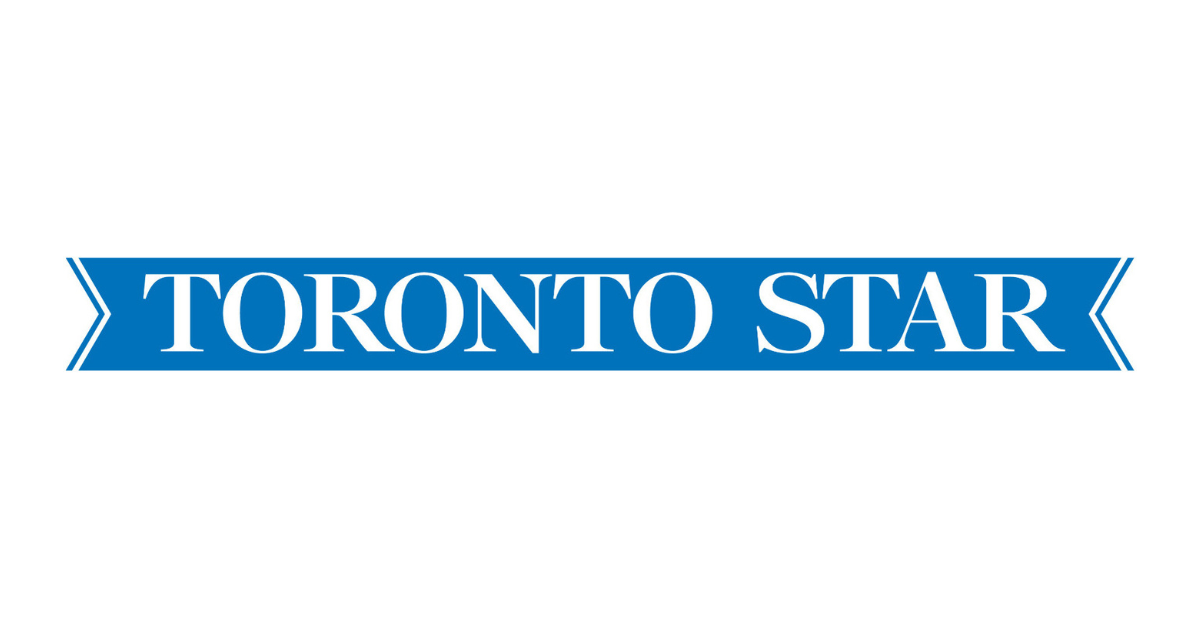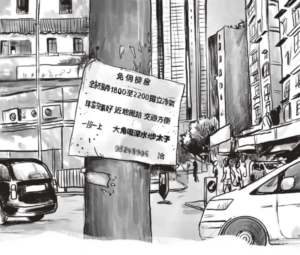To mark World News Day on September 28, 2022, the World News Day campaign is sharing stories that have had a significant social impact. This particular story, which was shared by the Toronto Star, was published on March 19, 2022.
The new rules are so baffling, even key stakeholders say they don’t understand how it will work.
Though it dropped with little notice in the wider world, plunked down with scant fanfare in a late COVID spring, it was, nonetheless, a massive moment for many Ontario companies — not to mention Ontario cities, Ontario towns and anyone who owns an Ontario home, or just lives in one.
Ontario Regulation 391/21: Blue Box was published online on June 3, 2021. It laid out the terms by which Ontario’s entire curbside recycling regime would be overhauled over the next two years.
Under the current system, more than 240 Ontario municipalities run their own separate blue box programs, with the costs split between cities and the companies that produce and sell household plastics, metals, glass and printed paper. Under the new system, the companies themselves, including giants like McDonald’s, Unilever and Loblaws, will be responsible not just for the entire cost of the program, but for running it, too.
The new blue box regulation appeared following years of fevered lobbying by some of Ontario’s largest and most influential corporate interests. It set the stage for a change environmentalists hoped would drive a new era of better, more productive recycling in the province, and kicked off a fierce and barely concealed battle for hundreds of millions of dollars in annual collection and processing contracts.
It was, in other words, a big deal: for almost any company that sold or manufactured household products in Ontario; any company involved in the $2.8-billion Ontario waste management industry; and anyone interested in the environment or the economy of Ontario.
For Doug Ford’s government, the regulation was a defining piece of industrial and ecological policy, one that would touch the lives of almost every person in the province and set the stage for either a generation of household recycling gains in Ontario or several decades of costly and damaging stasis.
The stakes, then, could not have been higher, which is in part why so many players in the recycling world were completely baffled by what the government put out.
“I’ve been around this issue for a number of years,” said Jo-Anne St. Godard, executive director of the Circular Innovation Council (previously known at the Recycling Council of Ontario). “A lot of us have, and I remember when it first came out … we were calling each other going, ‘I don’t even know how to read this.’ ”
The idea behind Ontario’s big recycling change isn’t new or novel. Other jurisdictions, especially in Europe but more recently in North America too, have been off-loading recycling costs and responsibilities to paper and packaging producers for years.
But what the Ontario government came up with wasn’t built off any of those existing models, according to experts in environmental policy. Instead, critics say, it was a made-in-Ontario mishmash, a unique regime that even some with decades of experience in waste management and environmental consulting have trouble understanding.
“Don’t beat yourself up if you find it confusing. It’s confusing to people who’ve been in the industry for 30 years,” said Denis Goulet, president of Miller Waste Systems, a garbage and recycling company headquartered in Markham.
That confusion could have serious consequences. More than eight months after the regulation was published, industry players are still struggling to build a workable system off the government model. With the transition to the new regime set to begin in less than 16 months, and a provincial election campaign just weeks away, many are worried the various players won’t have enough time to get a functioning system off the ground before the summer of 2023, when the new regime is set to kick in in Toronto before rolling out across the province over the following two and a half years.
That kind of delay could be costly. It would force some municipalities to sign expensive contract extensions with existing suppliers (Toronto has already made provisions to extend its current contracts if necessary) or work out new deals in a tight market already constrained by supply chain backlogs. (The lead time to buy a new garbage and recycling truck, for example, is now somewhere between 18 months and two years, according to industry sources.)
But timetables and deadlines are only part of the story. The larger issue, according to many in the recycling sector, is that they don’t believe the Ford government’s blue box regulation as currently designed will be good for either companies in packaged good industries or for the environment.
The main goal of having a recycling system paid for and run by the companies that produce paper and packaging is simple: to get a better recycling system, one where less packaging ends up in landfills and more raw materials are repurposed and put back into the economy. But that only works, according to both environmentalists and industry experts, if the government lets the market do its job, by setting high standards and then getting out of the way.
Critics charge that the Ford government’s plan does neither. “The government did exactly what we were all fearful of them doing, which has been to be too prescriptive in the process,” said St. Godard.
The regulation sets recycling benchmarks that environmentalists say are far too lax to spur real change and lays out a process that some in the recycling sector believe is much too cumbersome to allow for market innovation to thrive.
“They’ve written a regulation, ostensibly to promote competition, that’s turned into the most anti-competitive recycling regulation I’ve ever seen,” said Usman Valiante, a private sector consultant with almost 30 years of experience in the recycling industry.
As a result, many in the recycling world now fear that Ontario will end up with a blue box system that splits the baby and throws out both halves, one that is neither progressive on environmental issues nor market driven on execution, a result that leaves some wondering why the industry was put through this long and expensive process in the first place.
“I’ve been involved in the waste system for more than 30 years and I’ve never seen anything as f-ed up as this,” said one senior industry official who was granted anonymity to speak frankly about an ongoing, commercially sensitive process. “I think the blue box is going to be a disaster at this point.”
The Star sent a detailed list of questions to Ontario Environment Minister David Piccini about the new blue box regulation, the lobbying that preceded it and the pushback from both industry and environmental groups about the new system. He answered none of them. Instead, a spokesperson for the Ministry of the Environment, Conservation and Parks, sent a long statement that read in part:
“We are working to deliver a blue box system that will make recycling easier by standardizing what goes in the blue box and expanding services to more communities across the province … We have made sure we have a process that ensures broad collaboration and brings all parties together in pursuit of the best possible recycling system, and one that will be a North American leader.”
The process that led to Ontario’s current blue box quagmire began decades ago, when the province launched the world’s first curbside recycling program, in Kitchener. The Kitchener trial proved a success and soon blue box programs were spreading across Ontario and the rest of the world.
The bones of the current system were laid down in 2002, when Ontario passed the Waste Diversion Act. Under the rules established that year, companies that produced packaging or printed paper for consumer use had to register with a provincial agency and pay into a fund that subsidized curbside recycling.
For the past 20 years, the foundation of that system has operated more or less unchanged. Today, Ontario municipalities are responsible for operating or contracting out curbside recycling services while the costs of those services are, in theory, split evenly between municipalities and producers. (In practice, the two sides have squabbled endlessly over how to calculate those costs.)
The 50/50 split represented Ontario’s first baby steps toward what’s known as Extended Producer Responsibility (EPR), a term coined by Swedish academic Thomas Lindhqvist in 1990. The philosophy behind EPR was that if you made packaging a cost for businesses, not just on the production side but on the disposal and recycling end, too, they would, over time, be incentivized to use less and more ecologically friendly packaging.
“If waste becomes an external cost of doing business, then you would treat that cost just like you would any other,” St. Godard said. “And through the competitive tensions of the marketplace, you would be incented to design better, and you may even — (in a) utopia — design it so that you get that product or package back and integrate it into your own production cycles.”
The current transition takes that idea and pushes it into hyperdrive. In 2016, the then Liberal government introduced the Waste-Free Ontario Act, which aimed to move the province to a full EPR system. The legislation established the principle, already standard in Europe, that producers should be fully responsible, not just for the costs of the curbside recycling system, but also for the operation of the system itself, including contracting, collection and processing.
What the Liberals did not do, however, was lay out exactly how that system was supposed to work in Ontario. Instead, in 2018, they lost to Doug Ford and the Progressive Conservatives and left the details up to the new government.
How exactly the Ford government came up with its own regulation is still something of a mystery, even to some who have been intimately involved in the blue box process. Most agree, however, that it involved some mix of ideology, influence and ignorance about how recycling policy works in the real world.
Beginning in 2018, producer groups and waste management companies started signing up a who’s who of well-connected lobbyists to push their competing versions of an ideal blue box regime. (“Ontario has very strict lobbying rules, which we take very seriously, and any insinuation otherwise is completely and totally inaccurate,” the ministry said in its statement.)
In return for paying for the system, the producer groups, which include many of the largest consumer-facing companies in the province, had a simple ask: they wanted full control over how it worked.
Environmental groups, meanwhile, wanted the province to set high benchmarks for recycled materials and strict reporting and auditing requirements for producers.
(Those pleas, according to environmentalists and some industry sources, were largely ignored. “This government has completely marginalized the environmental groups,” said another industry source who is still actively involved in the negotiations.)
Waste management companies, meanwhile, wanted a seat at the table and a regime that would allow them to protect their investments and existing infrastructure.
All of that sounds very complicated. And it is. But it’s not unprecedented. Many other jurisdictions have managed the transition to full producer responsibility. There was no need for Ontario to reinvent the wheel. And yet, that’s what the province did.
The new Ontario system laid out in the regulation published last June is unlike any other in the world, according to Duncan Bury, an Ontario consultant who has spent more than 25 years working on EPR. “This is a unique Ontario (he paused here to laugh) special case,” he said. “What they’ve developed is way more complicated than it needs to be, and I think there’s real worries about how this will actually roll out.”
The new regulation created a complex system whereby producers would sign up with competing Producer Responsibility Organizations (PROs), which would in turn create rules to divide recycling pickups among themselves geographically across the province and then contract out those pickups to waste management companies, all under a heavily proscriptive regime that ran some 36 printed pages and almost 17,000 words.
The Star spoke to almost a dozen executives and consultants who have worked on every side of this file. Almost to a person they expressed some confusion about the new rules. “This is the most bizarre approach to packaging regulation and EPR we’ve seen,” said St. Godard.
“It’s just so obtuse, you cannot understand what the hell they’re talking about,” added Bury.
It’s also, according to some at least, not particularly rigorous. “Clearly, the targets are not as robust as they should be on plastics, which is a critical issue to everybody,” Bury said. Nor are the reporting requirements strict enough, St. Godard believes.
“The focus has always been around what you do with the waste. There has been very little discussion around what really are the impacts to the environment and health when it comes to having these regulations in place,” said Fe de Leon, a researcher with the Canadian Environmental Law Association. “That’s, to me, almost like a second-tier discussion.”
Why did the regulation turn out this way? Some blame politics. Multiple sources familiar with the negotiations that led to the published version say they believe that direction on this issue was set at the top level, in the minister’s office, where staff were focused almost exclusively on having a system that had competition between PROs.
One private sector consultant said the government came in with an ideology, but without a real understanding of the complex regulatory and commercial environment at play.
It was that ideology, some believe, rather than a specific outcome, that drove the policy-making process. “The government at the time decided to go out with multiple PROs because they think it created competition,” said Patrick Dovigi, founder and CEO of Green For Life Environmental, Ontario’s largest waste management company. “That was in their mindset. I personally think the mistake that they made is there is no competition at the PRO level. All the multiple PROs dynamic does is create inefficiencies where all the costs really are.”
That government said that the new system has high targets backed by robust data reporting and auditing requirements and that it will encourage innovation and competition. “Ontario will soon be home to a leading blue box service that will better serve the taxpayer, have the highest waste diversion targets in North America, and promote innovations in recycling technologies and use of recycled materials,” the ministry said in its statement.
How soon, though, remains an open question. The regulation established a strict timetable for the creation of the PROs, the signing up of producers and the submission of the final rules. But the process since last June has been anything but smooth.
In July, GFL acquired the Canadian Stewardship Services Alliance (CSSA), a kind of non-profit clearing house on recycling policy founded by and funded by producers. In the same news release announcing the acquisition, Dovigi revealed that GFL was starting its own PRO, the Resource Recovery Alliance (RRA).
That decision sparked a major dispute between Dovigi and the large producers, many of whom believed that there is an inherent conflict in GFL, a waste management company, owning a PRO, which would in turn be contracting out business to waste management companies. (Producers had hoped for a regulation that barred that kind of vertical integration.)
Some also feared that GFL would use its market dominance to undercut other PROs on price and sign up a supermajority of producers which, under the regulation, would allow it to craft new allocation rules for the entire province.
Producers weren’t the only ones worried. “I think you need to be able to have separate church and state,” said St. Godard. “Producers need to be protected so that they have choice in the marketplace. That was the whole point of this. And if you have a monopoly service provider, or one that has a very big dominant position, the buyers of that service may find themselves only having one price-taker effectively.”
But Dovigi thinks all of that was overblown. “From our perspective, there’s no disagreement,” he said. “They think that we are the big bad guys that are going to get in and drive up costs significantly once we control the market. And it couldn’t be further from the truth.”
And if there’s anyone at risk of being bullied in a dispute between GFL and the major producers, Dovigi believes, it’s him. “This is David versus Goliath, right? I’m David. They’re Goliath,” he said. “People are making me out to be the bad guy, but I’m dealing with hundreds of billions of dollars of corporations on the other side and we’re just little GFL from Toronto.”
(GFL, the fourth largest waste management company in North America, and by far the largest in Ontario, has a market cap of $12.3 billion.)
In any case, by late fall it was clear that, for now at least, RRA and GFL didn’t have anywhere close to a majority of producers signed up. Instead, Circular Materials Ontario (CMO), a non-profit PRO owned by producers, seemed to have the edge.
Early in the new year, CMO was prepared to submit its own rules to the province (in collaboration with a third, much smaller PRO, Ryse Solutions, owned by Emterra, another waste management company). But then, everything got turned upside down.
On Jan. 13, the Resource Recovery Alliance, GFL’s wholly owned PRO, sent a letter to the province arguing that the blue box regulation was fatally flawed. The rule-making and allocation provisions were “complex and practically unworkable,” Nicole Willett, RRA’s vice-president, wrote. With the deadline for the rules fast approaching and a provincial election on the horizon, RRA was asking the province to rip open the existing regime and start over with something new.
In February, David Piccini, who became Ontario’s environment minister last June, signalled that he might be open to doing just that. Piccini summoned all three PROs to a private meeting where he announced a new, thinly sketched plan for a mediated consultation between the competing groups.
As of mid-March, that process is ongoing. The different PROs have submitted proposals to the mediator and to accounting firm KPMG and are awaiting direction from the minister with an update expected, according to a source familiar with the timetable, on March 22.
Time, meanwhile, is ticking away. The provincial campaign is expected to start no later than early May, leaving barely a year after the election before the blue box transition is set to begin.
“That’s why we’re nervous when we hear about another process that’s been sparked or led by the ministry,” St. Godard said. “And we don’t really understand why. As unique as this regulation is, the stakeholders have found a way to manage themselves within it. So why the extra process?”
In any case, for all their disputes, GFL and the major producers now agree on this much at least: the existing regulation, the one drawn up last June that so many stakeholders have found so utterly baffling, doesn’t work. They still disagree on the details. But both RRA and CMO have now asked the minister to rewrite the regulation, to reverse the central tenet calling for competing PROs, and to impose a single Producer Responsibility Organization to oversee the entire system.
“It’s just wrong,” said Dovigi. “The regulation needs to be fixed.”
For all the chopping and changing and moving around, one thing about the blue box process in Ontario has remained blissfully the same. As the Ford government scrambles to pump out perhaps the defining environmental policy of its first term, environmental groups say they’re still on the outside looking in. They haven’t been invited to the current round of consultations. They are not being asked to weigh in on any proposed regulatory change.
The new rules, when they are finally ironed out — if they are finally ironed out — will impact what every Ontarian puts in their blue bin. They will govern who picks up those bins, who pays for the system, and how many shopping bags, bottles and coffee cups end up getting recycled in Ontario and how many end up in a landfill. There are few provincial policies that touch so many in the province in such a tangible way. “So I’m not sure why they wouldn’t want to meet with every stakeholder,” said St. Godard.
But what’s remarkable about the reaction to Ontario’s blue box regulation is not that environmental advocates are opposed. Environmentalists have rarely seen eye to eye with the Ford government. It’s that so many other stakeholders, from so many different sectors, have been so put off too.
“It’s the right thing to do, but I’m sad to say, and in fairly typical Ontario fashion, it’s become overly complicated,” said Bury. “And, frankly, it’s a bit of a mess.”




